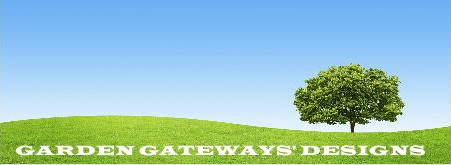
Presents
Theme Gardens
Butterfly Gardens

Butterflies are very reliant on specific vegetation to support their larval stages and to feed them nectar and pollen during the mating butterfly stages.
Watching these insects do their thing in the garden can be enchanting. There are many commercial butterfly gardens that have created habitats that draw thousands of people to see these creatures in all their stages of development. Most clients would not want to convert their entire garden over to this purpose as they usually don’t care to see half eaten plantings that dedicate their existence in large part to the care and feeding of these insects. On a large scale this requires the plantings to be subservient to the butterflies and the garden design to be dedicated to the goal of sustaining the insect population. A most probable alternative for the typical garden is to select a limited class of butterflies grouped by virtue of their common needs. This translates to the designer selecting the desired species of butterfly, research its needs insofar as plant type to feed on and attach to the plant while in its chrysalis stage and then desirable flowers to draw the emerging butterfly’s to engage in the cross pollination process.
The decision to select butterfly landscape features and integrate them within your garden should not be taken lightly, but a successful implementation will result in great joy to designers and visitors alike.

Creating Butterfly Gardens
(Reprinted with permission from www.learnaboutnature.com)
Butterflies are some of the most beautiful and interesting creatures on Earth. By planting a butterfly garden with all of the right kinds of plants and flowers that butterflies love to feed on and lay eggs on, you will certainly have a yard full of butterflies throughout the growing season. Butterfly gardens can be any size – a window box, part of your landscaped yard, or even a wild untended area on your property.
Creating a butterfly garden should start with some serious research to learn which kinds of butterflies are native to your area. You can learn that from our article “Butterfly Gardening by Area”. Make a list of all of the different kinds of butterflies you would like to attract, and then learn which flowers and plants they both feed on and lay eggs on. All of the butterfly landscape plants will certainly be native to your area and therefore easy to grow with the right conditions and care. Adult butterflies will visit for a longer period if they find plants to lay their eggs on. These are called ‘Host Plants’ and you can read about them in our article on “Butterfly Host Plants.”


Once you have done your research and know which kinds of plants you need, you should learn about the plants and flowers. What do they look like? How tall do they grow? What conditions do they thrive in? Perhaps print small pictures from the internet of each plant and flower so that you can begin to plan your butterfly garden by placing the pictures in the order in which you will want to plant them. In this way you can get a very good estimate of how much room you will need, and what your finished butterfly garden will look like.
Check with a local greenhouse about getting these plants and flowers. Find out which ones are annuals and which are perennials. You may want to plant the annuals in the front of the garden or away from garden fencing because they will need to be replaced each year. Perennials will come back year after year so these should be near the back of the butterfly garden and left alone to grow and thrive. If your local greenhouse cannot get you the plants you need, check in catalogs that sell bulbs or online and order them. Be sure to learn when and how to best plant them, especially if you must purchase bulbs and start the plants from scratch.
You can add some butterfly garden accessories like a Butterfly House, which has slots the ideal size for keeping birds out while giving butterflies protection from the wind and weather, and are beautiful garden decorations. You could offer an additional nectar source close by to supplement your flowers. By providing both the food and shelter butterflies need you can prolong the butterfly’s stay in your garden and draw in others.
Once you have designed and started your butterfly garden, you can be proud that you have made a habitat for butterflies in your own yard, which helps with the conservation of the many species of quickly disappearing butterflies today. You will certainly want to place your favorite outdoor furniture near so that you can enjoy all of your visitors day after day.





















































